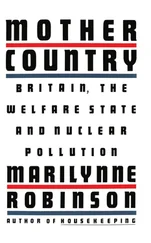Bevan had to agree to plans that were calculated to slash housing completions in 1949 to 140,000. 37The lead-time in reducing capital spending meant that 1948 still saw 227,000 permanent houses completed – almost 90,000 up on the previous year – and the easing of economic conditions that year in fact led to 197,000 completions in 1949, not the cut to 140,000 originally planned. But under Labour the figures were not again to climb above 200,000, sticking at 198,000 and 194,000 in 1950 and 1951. 38Housing was forced to take its place in the economic priorities, something Bevan found himself cornered into accepting in part because he did such a brilliant job of defending the burgeoning NHS budget. Sir John Wrigley gloomily told Bevan in 1947: ‘If we build more than 200,000 houses, I’ll be sacked by the Chancellor, and if I build less I will be sacked by you.’ 39
Although the criticism of Bevan’s record on housing became less ferocious with the big rise in completions in 1948, Labour remained on the defensive. Even at the Labour Party conference, of which he was a darling, Bevan faced criticism. In 1949, in Blackpool, he argued that despite the huge waiting lists, swollen by demographic pressures, he had not only made good all the wartime destruction but had, by then, provided Britain with more houses per head of population than ever before. There remained, he pleaded defensively, great timber shortages. Had the timber been there ‘what would you take the building workers from to build more houses – schools … hospitals … mental homes … nurses’ hostels … the factory programme?’ Yet again, he rehearsed his refusal to cut the standard or size of homes. ‘We will not build houses today which in a few years’ time will be slums.’ 40
Traditionally, housing has been branded the welfare state failure of Bevan and the 1945 Labour Government, chiefly on the grounds that too few houses were built. Certainly disillusion with the housing shortage contributed to Labour’s defeat. Between them, however, Bevan and Dalton provided more than a million good quality homes between 1945 and 1951, homes that were to be popular when the tenants gained the right to buy them in the 1980s. They also set the pattern of local authority building for rent that was to be followed for a generation by both Tories and Labour until, at its peak in 1979, a third of the stock was council housing. Given the way that preference for public over private turned out, it may be that rather than numbers which is the more questionable part of the record. Bevan and Dalton, however, cannot be blamed for the quality and style of housing that their successors adopted.
CHAPTER 9
The Final Foundations
By the time Labour left office in 1951 it had succeeded in presiding over a massive expansion of secondary schooling which in practice confirmed the distinctions in an already divided educational system.
Roy Lowe, Education in the Post-War Years, 1988, p. 53
[In the late 1940s] The award of a grammar school place at the age of eleven was equivalent to more than doubling the resources devoted to that child if it had gone to a modern school.
John Vaizey, The Costs of Education, 1958, p. 102
I wondered why I felt deep down angry having read the draft. Then I realised that Mr Squeers had given me a quizzical look across the years.
Ellen Wilkinson, on reading the proposed secondary modern school curriculum, 1946 in Vernon, Ellen Wilkinson, 1982, p. 222
There was a terrible shortage of teachers. The first ten years was all hands on deck to get schools built and more teachers in them.
Sir Toby Weaver, Deputy Secretary, Department of Education and Science, 1946–73
In its final form, as it emerged in 1948, the NHS represented the victory of the values of rationality, efficiency and equity … But there are other values … a view which stressed responsiveness rather than efficiency, differentiation rather than uniformity, self-government rather than national equity.
Rudolf Klein, The Politics of the NHS, 1983, p. 28
BEFORE BEVAN’s health and housing programmes took off, before Griffiths’s social security Acts, but with the reality of full employment, it fell to Ellen Wilkinson, the fiery flame-haired heroine of Jarrow, ‘five foot of dynamite’ (she was actually 4ft 10in) and ‘the pocket pasionaria’, 1to start implementing Butler’s Education Act.
By the time Labour took power in July there had been a year of ‘massive, even frenetic’ planning among the 146 education authorities. 2It had been a time of high optimism, what one county chief education officer was to call, with considerable prescience, perhaps ‘the last grand flourish and fanfare of local government’. 3
However, not only was the school leaving age to be raised to fifteen on 1 April 1947, but the birth-rate (one of Bevan’s banes in housing and health) had been rising since 1942. That year it was up 73,000 to 652,000. In addition, the infant mortality rate was falling sharply under the influence of improved treatment and better wartime diets for the poor. Between 1942 and the end of 1947, no fewer than a million more children were born in England and Wales than in the previous five years. These all had to be found school places at the age of five, on top of the extra 200,000 places and 13,000 teachers needed to raise the school leaving age. 4The victims of this demographic shift in the school population proved to be the plans for nursery education and the major restructuring of secondary education that had been envisaged in the more enlightened parts of Butler’s White Paper and Act.
To get the show on the road, wonderful Nordic-sounding acronyms were enlisted. To achieve ROSLA (Raising of the School Leaving Age), HORSA and SFORSA (Hutting Operation for the Raising of the School Leaving Age and School Furniture Operation for the same purpose) came into being. In addition an emergency scheme, drawn up by the coalition, put 35,000 ex-servicemen and recruits from business and commerce through a crash twelve-month teacher-training course. Although it took over-long to get up to speed, it leavened the traditional teacher intake with people who had healthy experience of the outside world. 5Most, however, went to the primaries and the secondary moderns, where the birth-rate and the new school leaving age were chiefly increasing the numbers. The effect, unwittingly, was to reinforce the status distinction between grammars, with their better educated and better trained staff, and the secondary moderns. 6
Such was the pressure and the competition elsewhere in the economy for raw materials and manpower (it was manpower shortage, not unemployment, which was Labour’s recurrent problem), that the Cabinet twice debated postponing ROSLA. In August and September 1945, Ellen Wilkinson achieved agreement easily enough that the date should stick. It was seen, in her words, as ‘a political necessity’ and in Herbert Morrison’s as a ‘test of the Government’s sincerity’. The date held even though it was realised that for a time it would mean makeshift accommodation and over-large classes. But in late 1946, Dalton, in all else the welfare state’s generous, even over-generous, friend, panicked. It would mean ‘a direct loss to the national labour force which will reach 370,000 by September 1948 … at a time when the whole economy is badly overstrained,’ he argued. A five-month postponement would also allow preparations to be much more complete. 7
This was a battle that Ellen Wilkinson’s Permanent Secretary, Sir John Maud (later Lord Redcliffe-Maud), judged she had to win, or the already limited resources for education would go elsewhere. 8She arrived at Cabinet issuing barely veiled threats of resignation. Postponement would deprive 150,000 children of a whole year’s education, and ‘the children to suffer most would be precisely those working-class children whose education has already been so seriously interrupted by the war. They would all be children of working-class parents; and parents in better circumstances would remain free to keep their children at school,’ she told the Cabinet. If it was put off, the same intensity of effort to hit a date would never again be achieved. The country needed higher levels of skills immediately, not less skilled workers. Whenever governments hit trouble, she said, education was the first casualty. 9
Читать дальше
![Nicholas Timmins The Five Giants [New Edition]: A Biography of the Welfare State обложка книги](/books/701739/nicholas-timmins-the-five-giants-new-edition-a-cover.webp)











